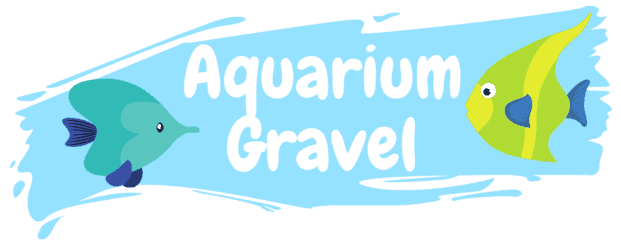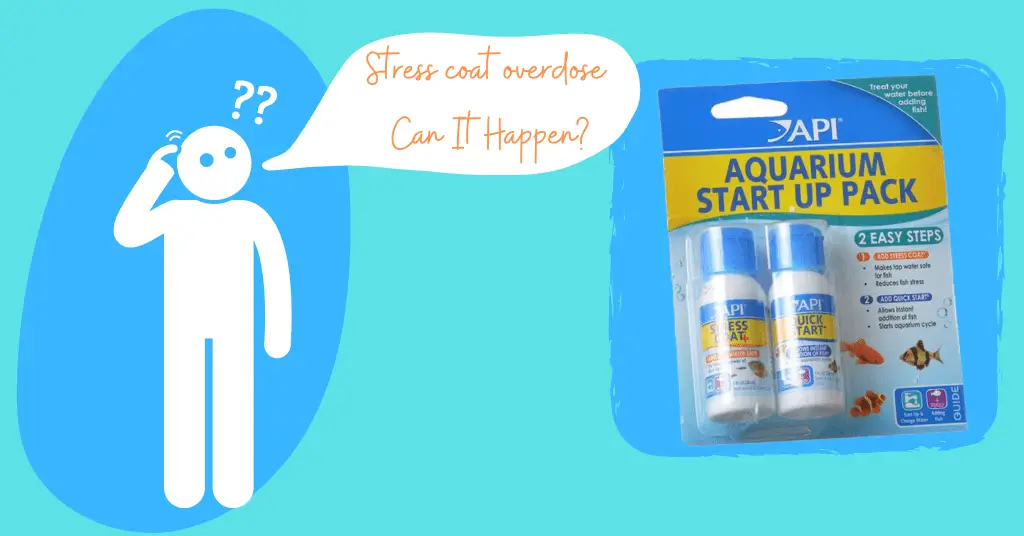Last Updated on November 14, 2021 by cmoarz
So you want to start using API stress coat or API Pond stress coat in your aquarium or pond and need to know what happens if you screw it up, right?
This article will put your mind at ease! We will explain what happens during a stress coat overdose, If it’s even possible, And what to do about it if you do happen to add a bit too much stress coat.

First, What is API stress coat exactly?
Table of Contents
API Stress Coat is a brand name de-chlorinator and fish protector rolled into one. It removes chlorine, Neutralizes Chloramines, and ammonia just like any other water conditioner would (with the exception of the ammonia removal, that’s an exclusive as far as I know).
It does well at detoxifying heavy metals found in principality water and well water. Heavy metals found that can be otherwise dangerous.
It also has the added bonus of giving your fish a bit of extra protection by using a combination of aloe vera to reduce fish stress as well as add a protective slime coat over the fish’s body.
This slime coat does 2 things, It calms the fish down just like its natural slime protection coat (such as a corydoras would produce).
It also affords special protection against bacterial infections, and gives scratches and cuts a chance to heal while avoiding infection.
In this way, it can promote healing and repair damaged skin with soothing aloe vera, while simultaneously removing chlorine and neutralizing chloramine, something considered much harder to remove.
So all in all, it’s a swiss army knife tap water conditioner that eliminates harmful chemicals as well helps fish recover from wounds.
That sounds like a very useful thing to have right?
Of course, it’s always scary to add a new product to your fish tank because you don’t know how everything in the aquarium water is going to react.
Or worse, You’re worried you will dose wrong and might have accidentally overdosed the tank.

Can you overdose on stress coat?
No, You can’t overdose on stress coat. While technically possible in massive quantities, It’s virtually unheard of. Diminishing returns of oxygen removal compound how difficult it is to overdose on API stress coat pond or regular. Heres why:
First, let’s look at the ratio instructions and recommended dose on the bottle of API stress coat. The bottle tells us how much API stress coat per gallon to fill the cap up to, 5ml per 10 gallons of water to remove chlorine and double dose for chloramine.
The bottle cap has some handy measuring lines to make life easy.
These instructions already take into account your substrate level and other average aquarium things that displace water. So even if you are slightly under 10 gallons, say, 4 gallons, You’re still well within the safety limits of what has been tested by API.
The same goes for API pond stress coat with 120ml for every 480 gallons of water.
On top of that, API itself tells us when we use API stress coat we should double the dose to replace slime coat as well as help rejuvenate damaged tissue. This increased dosage is also necessary to neutralize chloramines.
If a double dose wasn’t safe, they certainly wouldn’t recommend it.
So unless you’re really overdoing it, No, you can’t overdose on a stress coat.
But, what if you really do overdo it? What if you’ve accidentally poured an entire bottle into your aquarium, Now what?

What Does happen if you put too much stress coat in your fish tank?
Oh, shoot! You accidentally dropped an entire bottle of API stress coat into your aquarium, Or your toddler decided to “help” (first-hand knowledge here). Your pretty certain you put too much stress coat in a fish tank.
Surely that’s cause for alarm right? You’re sure to overdose now! Can too much stress coat kill a fish?!
Not so fast!
It’s actually insanely difficult to overdose even with an entire bottle. In fact, the amount you would need you probably don’t even own.
With that said, Some species of aquarium fish might be sensitive to such things, So what’s going to happen?
The first thing that’s going to happen is you will notice a foamy buildup on the surface of the water. Close to the airstone or any other agitation in the water column.
This is normal. It also happens when ammonia spikes or there is some other medication in the water. Don’t be too alarmed.
The more important thing to consider is oxygen.
The oxygenation of your tank water is going to go to 0. All water conditioners work by using oxygen in the water for a chemical reaction. The short answer is it will suck all the oxygen out of the water while it neutralizes chloramines and chlorines.
Only for about an hour.
If you have an airstone, which you should.
Labyrinth fish (fish that come to the surface to breathe and have gills) and hybrid fish will be fine. Your betas, your corydoras, etc. They can come to the surface to breathe like nothing ever happened.
For fish that only have gills, This could be a dangerous situation to be in. So what do you do?

What should you do if you put too much stress coat into your tank?
Assuming you did somehow manage to overdose the tank, Or you just want to be on the safe side of things, there are a few things you can do immediately.
First, you should do several water changes. Water changes will dilute the API stress coat. 25% the first water change, and then 25% of the 75% and so on in the additional water changes.
You should do 1-2 of these, or more depending on how much you’ve used and what reaction your fish are having.
You can also consider adding a second airstone to help oxygenate the water.
Nothing to be scared of and the solution is very simple as you can see.
In the future, and you’re a worrywart, You might consider dechlorinating the water in a bucket ahead of time. Wait 10-15 minutes for it to do its magic, and then mix in some oxygen with a bit of agitation or an air stone.
This might be considered over the top by some hobbyists, but at the end of the day, you do what’s best for your fish, not your peers! (TIP: All us fish people are weird anyway).

How often can you add stress coat to your aquarium?
The company gives us clear directions when it comes to how often you can add stress coat to an aquarium or pond.
For an aquarium, Every time you do a water change you should add the corresponding dosage, or if the ammonia starts to spike in a new tank that hasn’t had time for a biological filter to generate beneficial bacteria. (Better off with a new water change for ammonia removal if you ask me personally).
Saltwater is the same dosage and it is safe to use API stress coat in saltwater as long as you aren’t using a protein skimmer.
For ponds, you should use it every time you add water, like a normal aquarium, and every time you think your fish may need some stress relief or healing promotion from skin wounds.
Is API stress coat safe for invertebrates?
A common rumor is it isn’t safe for use on invertebrates. Invertebrates tend to be very sensitive to many things so it’s not hard to see why or how this rumor got started.
API stress coat and API stress coat pond are completely safe for all plants, fish, and invertebrates. While some fish may be sensitive, API stress coat is a near-neutral chemical and poses no harm to the tank inhabitants.
About
Owner of AquariumGravel.com and also owner of actual Aquarium Gravel believe it or not! ;). Setting up beautiful aquarium sceneries and habitats since I was very young. Enjoy!
- Web |
- More Posts(290)

